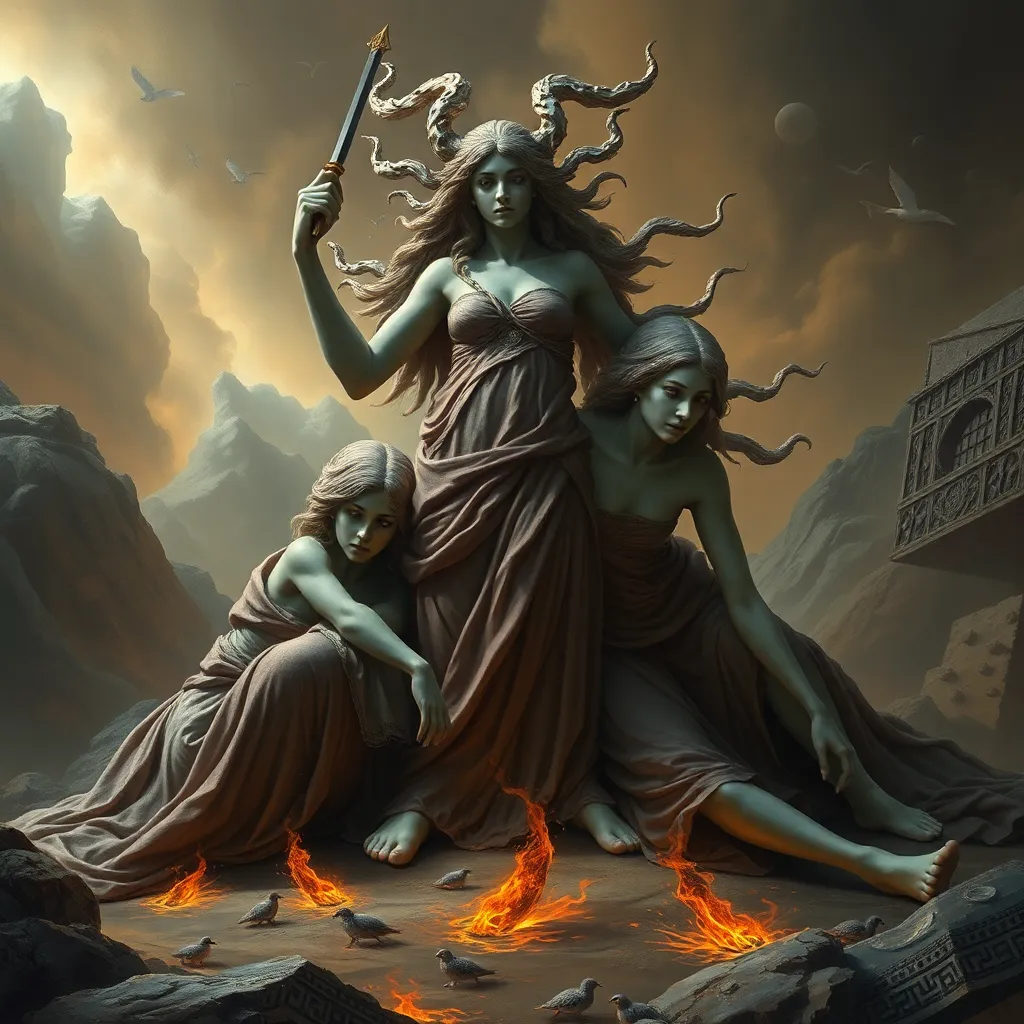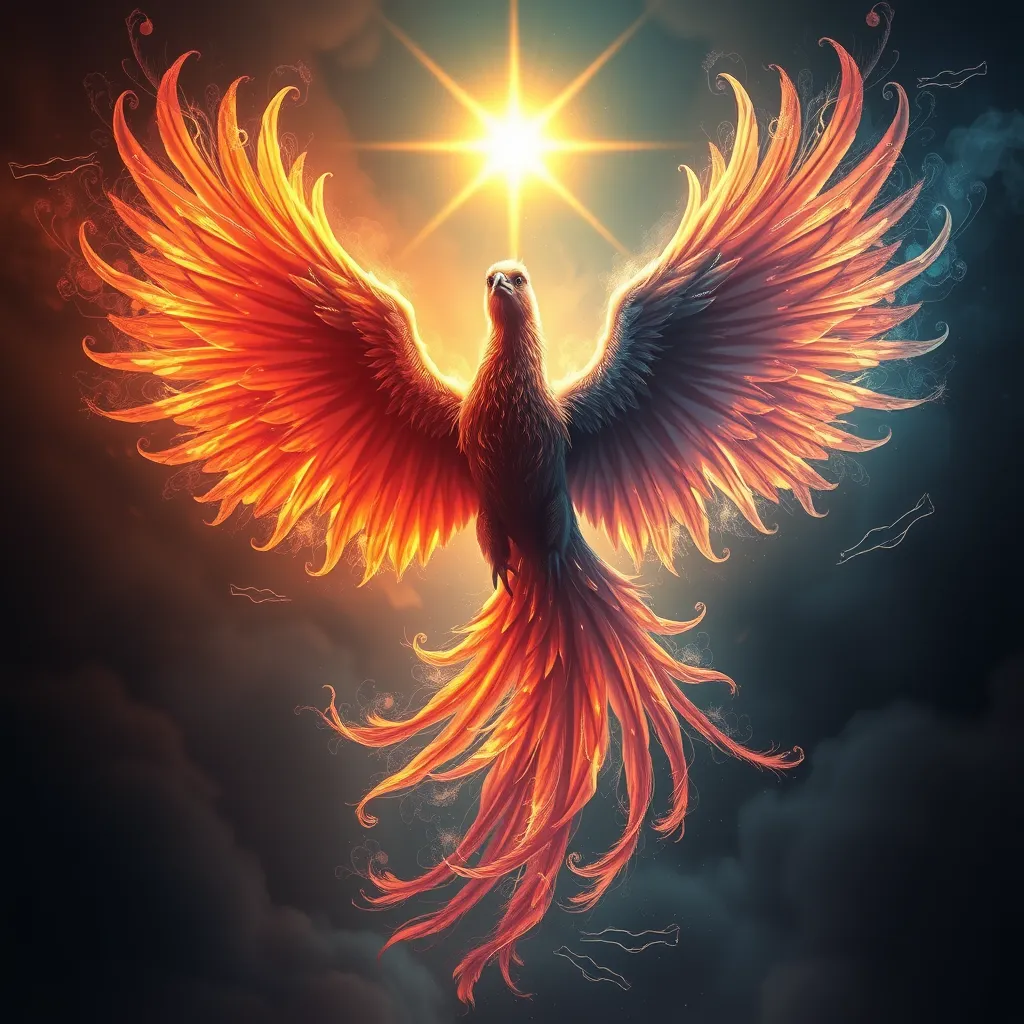Lamia’s Children: The Tragic Fate of Her Offspring in Greek Mythology
I. Introduction
Lamia is a prominent figure in Greek mythology, known for her tragic story and her role as a mother. Once a beautiful woman, her life took a dark turn due to the jealousy of Hera, the queen of the gods. The significance of Lamia’s offspring in mythological narratives highlights the complexities of motherhood, loss, and vengeance. This article aims to explore the tragic fate of Lamia’s children, shedding light on their story and the implications of their existence within the broader context of Greek mythology.
II. The Legend of Lamia
A. Background of Lamia’s character and origins
Lamia was originally a Libyan queen, renowned for her beauty and charm. She captured the attention of Zeus, the king of the gods, leading to a passionate affair. However, her fortunes changed drastically when Hera discovered their liaison.
B. The curse of Hera and its impact on Lamia
In retaliation for Zeus’s infidelity, Hera cursed Lamia, condemning her to a life of despair. She was transformed into a monster, plagued by insatiable hunger for the flesh of children. This curse not only altered Lamia’s physical form but also twisted her maternal instincts into something grotesque.
C. Transformation into a monster and implications for motherhood
The transformation into a monster marked a profound shift in Lamia’s identity. Once a nurturing mother, she became a symbol of fear and tragedy. Her monstrous nature not only affected her but also her children, who were caught in the crossfire of divine vengeance.
III. The Birth of Lamia’s Children
A. Description of Lamia’s offspring in mythology
Lamia’s children, often described as beautiful and innocent, were born from her union with Zeus. However, the details surrounding their births vary across different mythological accounts.
B. Variations in accounts of Lamia’s children across different sources
- Some sources mention that Lamia had multiple children, while others suggest she had only a few.
- The names of her children are often lost to history, but they are sometimes referred to in mythological retellings.
- In some versions, the children are depicted as ethereal beings, symbolizing the beauty of innocence before their tragic fate.
C. The role of these children within Lamia’s story
The children served as both a source of joy and sorrow for Lamia. Their existence reminded her of her past happiness, while their fates were a constant reminder of her cursed life. The children were essential to her narrative, embodying the themes of loss and maternal love.
IV. The Tragedy of Lamia’s Children
A. Examination of the circumstances surrounding their deaths
The tragic fate of Lamia’s children is rooted in the jealousy and wrath of the gods. Hera, seeking vengeance, ensured that Lamia would suffer the ultimate loss. In some accounts, Hera sent her own children to kill Lamia’s offspring, resulting in their brutal deaths.
B. The influence of Lamia’s monstrous nature on her children’s fate
Lamia’s transformation into a monster had dire implications for her children. Consumed by grief and rage, she was unable to protect them, and her desire for revenge led to catastrophic consequences. The curse that defined her existence also sealed the fate of her children.
C. The emotional and psychological ramifications for Lamia
The loss of her children shattered Lamia, plunging her into a deep abyss of despair. She was left to grapple with the duality of her existence: a mother who could not protect her offspring and a monster driven by vengeance. This emotional turmoil defined her character and solidified her status as a tragic figure in mythology.
V. Symbolism and Themes
A. Analysis of motherhood and loss in Lamia’s story
At its core, Lamia’s story reflects the profound aspects of motherhood intertwined with loss. Her transformation into a monster signifies how the pain of losing a child can distort maternal instincts, leading to destructive consequences.
B. The theme of vengeance and its consequences
The theme of vengeance is prevalent throughout Lamia’s narrative. Hera’s jealousy and subsequent actions not only affected Lamia but also had devastating repercussions for her children. This cycle of vengeance illustrates the far-reaching consequences of divine wrath.
C. Lamia as a symbol of female rage and the maternal instinct
Lamia embodies the complexities of female rage, driven by the societal and personal injustices she faced. Her story reveals the darker side of the maternal instinct, showcasing how love can be twisted into a desire for revenge when faced with insurmountable grief.
VI. Comparisons with Other Mythological Figures
A. Similarities between Lamia and other tragic figures in mythology (e.g., Medusa, Niobe)
Lamia shares similarities with other tragic figures in mythology, such as Medusa and Niobe. Like Lamia, Medusa was cursed and became a monster, while Niobe suffered the loss of her children, leading to her transformation into stone.
B. The universal theme of maternal loss in Greek myths
The theme of maternal loss resonates throughout Greek mythology, showcasing the vulnerability of mothers in a patriarchal society. Lamia’s story is a poignant reflection of this universal experience.
C. How Lamia’s story reflects broader cultural attitudes towards women and motherhood
Lamia’s narrative highlights the precarious position of women in mythology, often subject to the whims of the gods. Her tragic fate serves as a cautionary tale about the consequences of female rage and the societal expectations placed on mothers.
VII. Legacy of Lamia and Her Children
A. Impact on literature and art throughout history
Lamia’s story has left a profound impact on literature and art, inspiring countless interpretations and adaptations. Her tragic fate has been depicted in various forms, from ancient texts to contemporary art.
B. Lamia’s children in modern interpretations and retellings
In modern interpretations, Lamia and her children continue to be explored as symbols of loss and maternal instinct. Various retellings focus on the emotional depth of their story, emphasizing the psychological aspects of Lamia’s character.
C. The continued relevance of their tragic fate in contemporary discussions on motherhood and loss
The legacy of Lamia and her children remains relevant in contemporary discussions surrounding motherhood and loss. Their story serves as a reminder of the complexities of maternal identity and the societal pressures faced by women.
VIII. Conclusion
The tragic fate of Lamia’s children is a poignant narrative within Greek mythology, reflecting the deep emotional currents of motherhood, loss, and vengeance. Lamia’s legacy prompts us to reflect on the enduring power of myth in understanding human experiences, particularly those of women and mothers. Ultimately, Lamia’s story serves as a timeless lesson on the consequences of divine jealousy and the profound impact of loss on the human spirit.



